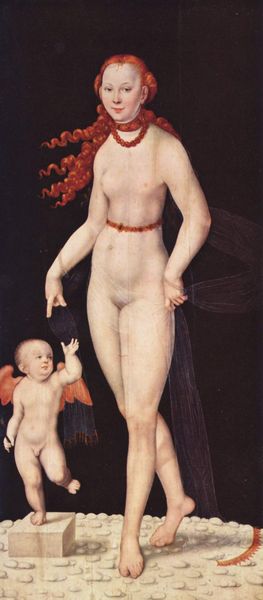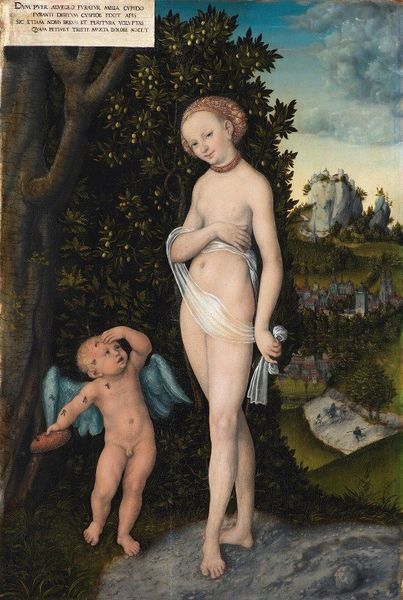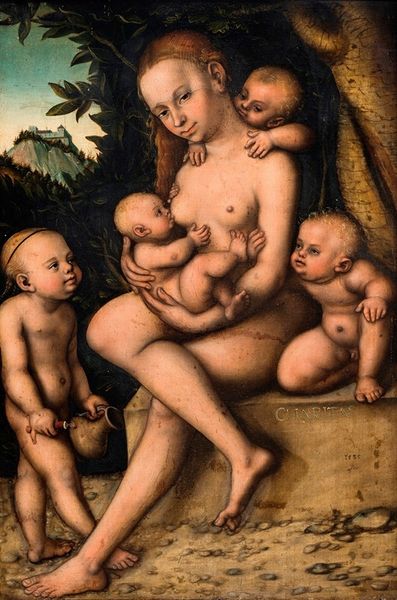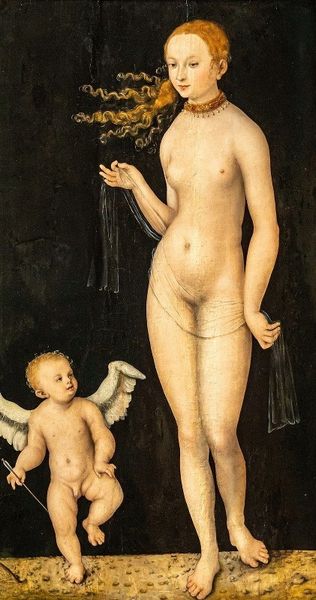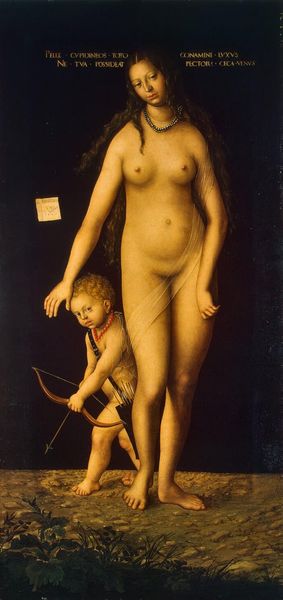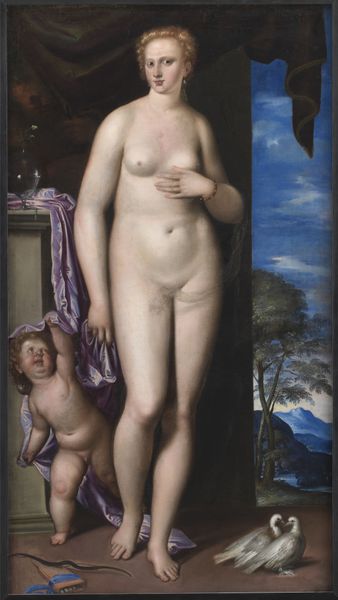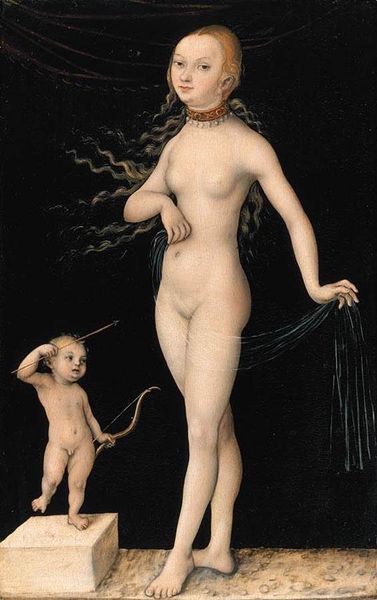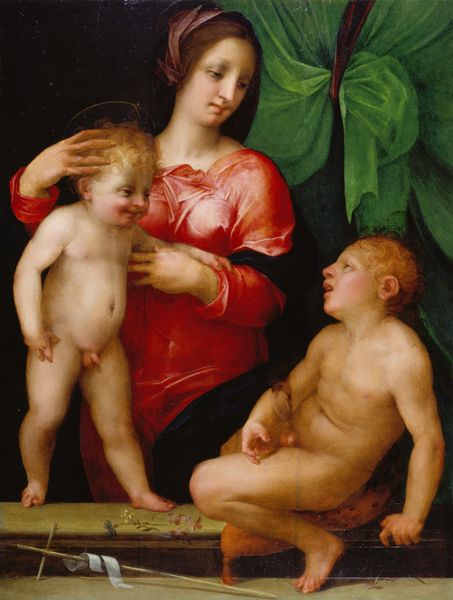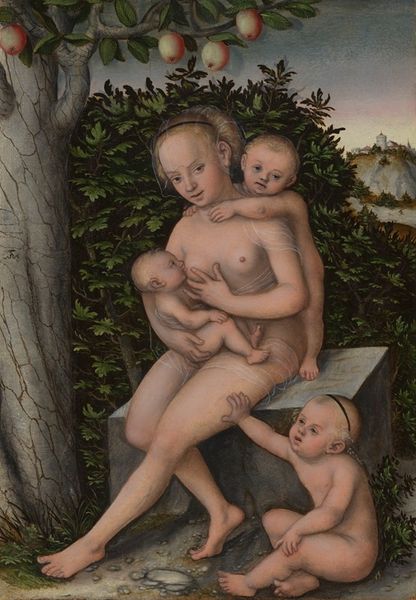
painting, oil-paint
#
germany
#
allegory
#
painting
#
oil-paint
#
mannerism
#
oil painting
#
italian-renaissance
#
nude
Dimensions: 39 × 17 × 3 1/2 in. (99.1 × 43.2 × 8.9 cm)31 3/4 × 9 3/8 in. (80.6 × 23.8 cm) (sight)
Copyright: Public Domain
This panel painting of Venus and Cupid was made around 1530, somewhere in Germany, by an artist known only as Monogrammist HB with the Griffin's Head. The painting presents a curious take on the classical subject of Venus, the goddess of love, and her son Cupid. It is made during the reformation, when new ideas were emerging about religion and the way people should live. The artist uses visual codes to represent the changing world, he does so by placing Venus on a pedestal like a statue, she is solid but cold and lifeless. Cupid appears clumsy and awkward, barely able to hold his bow and arrow. Venus holds Cupid on a leash, like a pet, or a puppet. The painting seems to be commenting on the state of love and desire in a changing world. Is the artist suggesting that love is becoming artificial, controlled, and devoid of true emotion? To understand this artwork better, one might research the social and religious history of 16th-century Germany, explore how artistic patronage and workshop practices influenced the production of art, and to consider the role of museums and galleries in shaping our understanding of art.
Comments
No comments
Be the first to comment and join the conversation on the ultimate creative platform.
